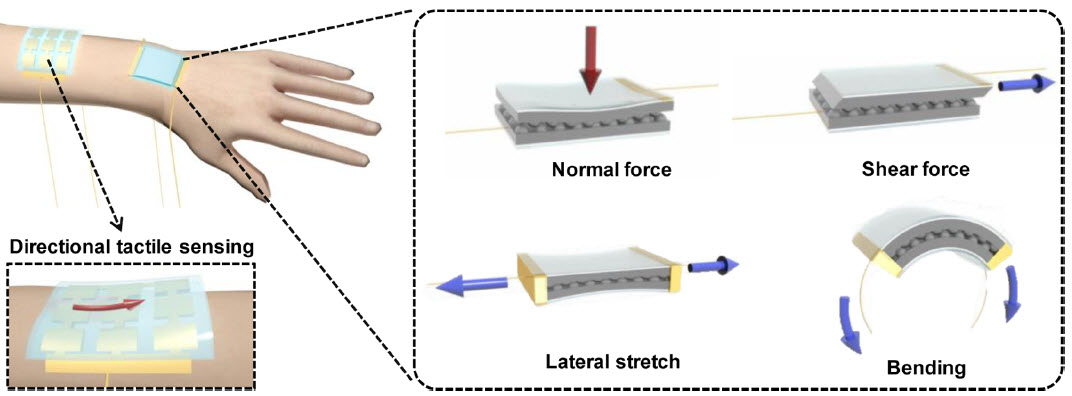

Current electronic skins are flexible, film-like devices designed to detect stress (pressure), read brain activity, monitor heart rate, or perform other functions. The new technology can also sense the direction and amount of stress, providing cues for the shape and texture of an object and how to hold it.
The new artificial skin is constructed of piezoresistive microdome arrays made from carbon nanotubes and PDMS silicone*, inspired by the interlocked epidermal layers in human skin.
When attached to human skin in the arm and wrist areas, the arrays can distinguish various mechanical stimuli applied in different directions and can selectively monitor different intensities and directions of air flows and vibrations.
The work was published in ACS Nano and supported by the National Research Foundation of Korea and Korea Institute of Machinery & Materials.
Stretchable electronic skins with multidirectional force-sensing capabilities are of great importance in robotics, prosthetics, and rehabilitation devices. Inspired by the interlocked microstructures found in epidermal–dermal ridges in human skin, piezoresistive interlocked microdome arrays are employed for stress-direction-sensitive, stretchable electronic skins. Here we show that these arrays possess highly sensitive detection capability of various mechanical stimuli including normal, shear, stretching, bending, and twisting forces. Furthermore, the unique geometry of interlocked microdome arrays enables the differentiation of various mechanical stimuli because the arrays exhibit different levels of deformation depending on the direction of applied forces, thus providing different sensory output patterns. In addition, we show that the electronic skins attached on human skin in the arm and wrist areas are able to distinguish various mechanical stimuli applied in different directions and can selectively monitor different intensities and directions of air flows and vibrations.